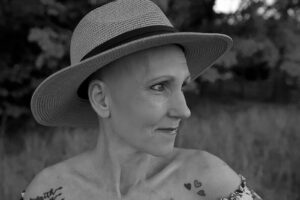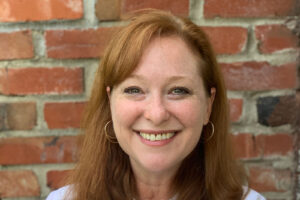My husband, like almost 80,000 other American men this year, was recently diagnosed with colorectal cancer. His prognosis is good, but after one recent appointment, he told me his doctor had put him on a new treatment path. But there was a problem: While Evan understood what the new treatment entailed, he didn’t have a clear idea of why his treatment changed. Just like he was never good at seeking directions before we got a GPS installed in our car, he lived up to another male cliché: He’s bad at asking medical questions.
In Evan’s mind, his doctor is the professional. “He’s the one who went to school and reads all the journals, so he’s more up to date than me on all the best options,” Evan told me over dinner. But later that evening, I found Evan searching for information about his new treatment.
What he found left him worried; the treatment seemed more aggressive than the original plan. Was his cancer more advanced than he realized? Did his relative youth make the doctor initially choose a more conservative approach? After a bad night’s sleep, he made a decision. At his next appointment, he’d actually chime in when the doctor asked, “Do you have any questions?”
Developing effective doctor-patient communication is central in building a good health care relationship. Multiple studies show that people who are well informed about their cancer treatment options often have better outcomes and fewer side effects than less informed patients, and patients who understand what is happening are more medically compliant and more satisfied with their treatment.
Talya Miron-Shatz, Ph.D., a scientist specializing in medical decision-making, says understanding your treatment gives you a measure of control. “At some level, you are actively involved in choosing your treatment,” Miron-Shatz says. Ideally, each patient would know enough about their illness and treatment to articulate why, for example, “they need to take that pill.”
However, 50 percent of medication for chronic conditions is not taken as prescribed, and nonadherence to cancer treatment is expected to grow as the number of oral medications taken at home continues to increase. Reasons for noncompliance are multifaceted, but the core doctor-patient relationship plays a big part. “We expect patients to take an active role in their treatment, but there’s a power imbalance. One of us is sick, the other makes the decisions,” explains Miron-Shatz.
In her research, Miron-Shatz discovered there’s more to the problem than just shy patients. “The first step is for medical professionals to invite the patient into the relationship,” Miron-Shatz explains. Doctors telling their patients they can ask questions is fine, but medical staff need to confirm patient comprehension. “We can’t expect everyone to know medicine,” Miron-Shatz says.
BRIDGING THE COMMUNICATION GAP
A combination of respect, embarrassment, intimidation, and distrust can keep patients from reaching out to medical staff. Likewise, blocks on the doctor’s side, including limited appointment time and lack of training in providing patient education, fuels a communication gap.
“While we encourage patients to become experts in their disease, we now recognize that this is a heavy burden for someone already challenged by a cancer diagnosis,” says Nancy Brook, a nurse practitioner with Stanford Health Care. While it can be helpful for a patient to prepare questions in advance, record each appointment (or bring someone to take notes), and keep all of their records in a binder, patients still need to know what kind of questions to ask in order to get good answers.
We expect patients to take an active role in their treatment, but there’s a power imbalance. One of us is sick, the other makes the decisions.
-Talya Miron-Shatz, Ph.D.
“Because everyone has a cancer story, new patients tend to be inundated with information,” explains Sandy Pyle, a registered nurse and cancer navigator with Piedmont Healthcare. “But every cancer is unique, and what worked for your neighbor’s uncle might not work for you.”
Pyle says new patients should first ask their medical provider about what resources they recommend. Often a doctor will send patients to cancer-specific societies and websites or, when they have them, oncology team members who specialize in specific concerns (i.e., a dietician, social worker, or physical therapist). Increasingly, cancer treatment centers such as Piedmont, Cedars-Sinai Integrative Health Program in Los Angeles, and New York City’s Center for Comprehensive Wellness are using integrative educational and supportive programs to supplement the information patients receive from their doctors. These support programs (typically offered as in-person groups and classes) have been found to improve patient compliance, prolong survival, and provide emotional support.
Spending time in a support group may not appeal to everyone, but Pyle says after a reluctant participant shows up once or twice, they often recognize the value. These groups can also help cancer educators identify gaps in patient knowledge. “Topics will come up in groups, like sexual dysfunction, that men aren’t comfortable talking to their doctors about,” she says. Groups can also help a patient identify a side effect or concern that might warrant a visit to the doctor.
Not every patient will be attached to a cancer agency or have a cancer association near where they live. This is where vetted online groups, videos, and apps may fill a need. Dr. Sunny Garg, a medical oncologist from India, developed a chat group and education site named CancerBro when he found his patients “needed more empowerment in the form of education, motivation and social support.”
Part of the need can be logistic. When patient advocates Janet Freeman-Daily and Lysa Buonanno were first diagnosed with lung cancer, Buonanno didn’t have access to an oncologist. Her doctor wasn’t up to date on current research, and she didn’t know what questions to ask. The two went on to help develop the Lung Cancer Foundation of America’s “Hope With Answers” video series.
“Most educational videos are doctors talking to doctors, and these can turn into lectures,” says Freeman- Daily. “But we wanted to model what a good doctor- patient relationship looks like, while still providing good information.” The hope is that the videos will empower patients to bring information to their appointments and get comfortable with asking more questions.
My husband Evan felt finding answers when he needed them to be the most difficult. His oncology team provided him with an extensive binder full of information and handouts, which he gave a brief skim. Taking it all in while he was still coming to terms with his diagnosis was too overwhelming. When symptoms appeared, he often couldn’t find the information he needed. In a case of out of sight, out of mind, he’d also forget to bring up the issues at his weekly appointments.
Dr. Philip Marshall, co-founder of a health care conversation platform called Conversa, says it’s this disconnect between doctor and patient that spurred the development of his company’s conversational, artificial-intelligence technology. Programmed by each patient’s doctor, the chatbot makes regular between-appointment calls to the patient and checks in with supportive and educational options. “It can be used to help a patient prepare for surgery or measure their symptoms, all while freeing up the care team,” says Marshall.
While each call is different, patients generally get a text which asks how they’re feeling and about symptoms based on their stage of treatment. The chat is programmed to anticipate questions or side effects as they arise. Rather than get a pamphlet about appetite changes a month before you need it, patients will receive a call as their symptoms are likely to begin, along with tips for how to manage them.
Both the doctor and patient hold valuable information when it comes to treatment, and Miron-Shatz says a patient’s idea of a successful treatment might not always match their doctor’s ideas. “The doctor has the medical information and knowledge but a patient has his own set of values and preferences,” she says. Successful communication happens when both parts of the equation are combined. The patient needs to understand and agree to the treatment—but he also needs to find a way to get his own feelings across and be heard. “It’s important to remember whose body it is and whose life it is,” Miron-Shatz says.







